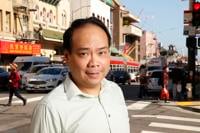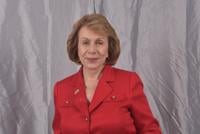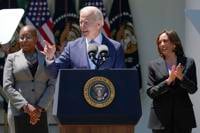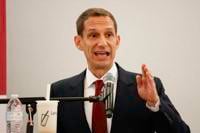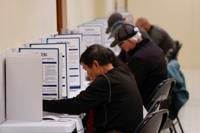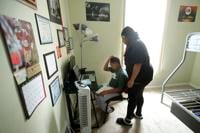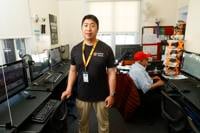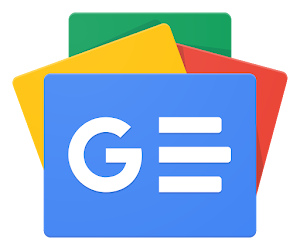Olivia Wise/The Examiner
Millions of Americans — including tens of thousands of San Franciscans — recently received some unwelcome news: Their internet bills are set to go up.
The effective rate hike was the result of the end of a federal subsidy program that has its roots in the nation’s response to the COVID-19 pandemic. Dubbed the Affordable Connectivity Program, the initiative was designed to close the long-lingering digital divide by providing significantly discounted internet access to low-income families, even allowing some to get broadband service for free.
But the program ended at the end of May after Congress — despite bipartisan support — failed to continue funding it. That left participants in The City and across the country facing the choice of swallowing costs formerly paid by the government, reducing their service to lower-cost offerings or canceling their internet access altogether.
The end of the program means that “the most vulnerable people in our economy, in our community, are going to be left behind at an accelerating pace,” said Sunne Wright McPeak, CEO of the California Emerging Technology Fund, a nonprofit established by the California Public Utilities Commission charged with helping get such citizens online. “We’re going to be right back into not just … a digital divide, but a digital cliff.”

George Chan, Chinese Newcomers Service Center Executive Director, pictured in Chinatown on Stockton Street in San Francisco on Friday, June 28, 2024. Chinese Newcomers Service Center helped sign up people in Chinatown for the Affordable Connectivity Program, which subsidized internet access for low-income people.
Craig Lee/The Examiner
The nation has long contended with a digital divide between those who have internet access — particularly high-speed access they could use with computers in their homes — and those who don’t. But the pandemic brought into sharp relief the societal problems associated with those gaps. During the lockdowns that were put into place to control the outbreak, online connections became critical tools for people to work remotely, go to school, see their doctors, order groceries and more.
To help those who couldn’t afford connections during that period because they had low-paying jobs, or lost wages or their positions due to the pandemic, Congress created the Emergency Broadband Benefit. That program temporarily offered a $50 a month discount off internet access and $75 a month to those who lived on tribal lands.
In late 2021, as part of the Infrastructure Investment and Jobs Act, Congress created the Affordable Connectivity Program, which was intended to be a longer-term replacement for the EBB.
Although the new program reduced the subsidy for people outside of tribal lands to $30, it expanded the pool of eligible people. Under EBB, households qualified only if their incomes were at or below 135% of the federal poverty line. ACP bumped that up to 200% of the poverty line. That meant that some 49 million people nationwide — including 5.8 million in California — were eligible for the discounts, according to data from CETF.
The new program, like the old, also offered a one-time $100 discount off the purchase of computers or tablets.

Sunne Wright McPeak, the CEO of the California Emerging Technology Fund, a nonprofit founded by the CPUC to close the digital divide. “We’re going to be right back into not just … a digital divide, but a digital cliff,” McPeak said of funding ending for a federal internet subsidy.
Courtesy of CETF
To ensure that households could use the ACP money to get fast connections, the Biden administration secured commitments from 20 of the nation’s leading broadband providers, including Comcast and AT&T, to allow enrollees to use their $30 subsidy to completely cover the cost of service that provided download speeds of at least 100 megabits per second.
Although the Federal Communications Commission quickly rolled out rules to govern it, uptake was initially relatively slow. By November 2022, about 30% of eligible households nationwide and 32% in California had signed up for it.
Those involved in helping get the word out about the program or help people sign up for it say they faced numerous challenges. Eligible enrollees can be difficult to reach, in part because many didn’t have internet connections at all before the program.
Additionally, there was little advertising done to get the word out about ACP around the state and particularly in San Francisco. And at least some of the advertising was done online — where those without connections weren’t going to see it.
“A lot of people didn’t know about this program,” said Andrew Broderick, a project co-director at the SF Tech Council, which works with other community organizations to close The City’s digital divide. “That was a challenge in itself.”
Part of the dearth of advertising was due to the state being late to distribute funds to promote the program, said Rey LaChaux, a digital equity manager in the San Francisco Mayor’s Office of Housing and Community Development. But The City and surrounding communities also spent little themselves to tout it, McPeak said.

President Joe Biden speaks at an event on lowering the cost of high-speed internet in the Rose Garden of the White House, Monday, May 9, 2022, in Washington. Vice President Kamala Harris, right, and Alicia Jones, a beneficiary of the Affordable Connectivity program, listen. The ACP ended June 1, 2024 after Congress failed to continue funding it.
Manuel Balce Ceneta/Associated Press file.
It would have been ideal to be able to advertise the program on TV or via targeted ads on Facebook and other social-media services, LaChaux said, but most of the steps his office took to get the word out about ACP were done with little to no funding.
“That would have been awesome to have a budget for that,” LaChaux said.
Even when people knew about ACP, signing up for it could be a challenge. The FCC application for it was available in English and Spanish, but many of those eligible speak neither language.

The former fire chief writes that Daniel Lurie’s criticism of “city insiders” misses the mark
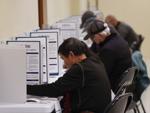
The City’s newly adjusted election calendar means this is the first cycle that residents will be voting for president and mayor at the same time
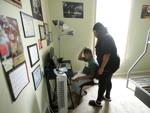
State regulators awarded The City $10 million to expand broadband internet access in three of San Francisco’s poorest neighborhoods
To prove eligibility, people had to submit documentation that they were enrolled in programs such as MediCal, which offers health insurance for low-income state residents, or CalFresh, the state’s food-stamp program. But collecting and submitting such documentation could be difficult.
About 80% of those who enrolled in the program in California were able to do so on their own, McPeak said. But the application process could be time-consuming and, for some, required a lot of assistance.
In the sessions the SF Tech Council held to help people sign up for ACP, it took people at least 30 minutes to complete an application and often as long as two hours, said Karla Suomala, another project co-director at the organization. During a three-hour session, the Tech Council would help about 40 people sign up — despite having 20 to 30 volunteers helping out, she said.
“The application was really complicated,” Suomala said.
Even with such challenges, the state and nation made significant progress toward closing the digital divide. By February, when the FCC froze sign-ups in anticipation of the program’s end, 23.3 million households — including 2.9 million in California — had signed up for ACP, according to CETF figures. That amounts to 48% of eligible households nationwide and about 50% in the state.
In San Francisco, 48,150 households enrolled in the program, about 38% of those eligible, according to CETF.
Bao Jie Wang, 76, was among the San Francisco residents who signed up. Before the ACP, she didn’t have internet access. Starting in May 2022, when she enrolled, she used the program to pay for a low-cost connection from Comcast.
Wang said she was glad to have it. She uses her connection to watch videos on YouTube, read news sites, get health information and communicate with friends and relatives in Asia via WeChat.
Now that the ACP subsidy is going away, she plans to pay the $10 monthly cost out of her own pocket, potentially reducing what she spends on food or clothes to afford it, she said.
“Without the internet, I’d be very bored in my life,” Wang said. “I have no choice but to pay that.”
But other enrollees will likely downgrade their connections.
One Tenderloin resident, who asked that her name not be used, said she signed up for the ACP with the help of MNC, a neighborhood group that works with low-income residents. The woman, who is middle-aged and has a disability, said she used the connection to pay for a high-speed connection from Comcast.

MNC Digital Navigator Benny Tan, pictured at the group’s computer lab on Friday, June 28, 2024, helped a Tenderloin resident who spoke with The Examiner sign up for a now-expired federal internet subsidy. She said she worries the speed that service provides won’t allow her to do video calls with her friends, family or doctor anymore.
Craig Lee/The Examiner
Her disability has often inhibited her from going out and interacting with people, because many often aren’t willing to accommodate people like her, she said. But her connection — the first home-internet service she said she had in a while — has opened up a new world for her, she said.
She said she used the connection to stream movies, check the news and hold video calls with her doctor and with family and friends overseas. She even planned to use it to take part in a virtual stage performance, she said.
Now that the subsidy is going away, she has cut back her service to Comcast’s low-tier offering, which costs about $10 a month. She said she worries the speed that service provides won’t allow her to stream movies or do video calls anymore.
“What can I do?” she said. “I just take what I can do and afford what I can afford.”
Other enrollees are cutting their connections entirely, advocates say. Even $10 a month is more than many people can afford, they say.
The Chinese Newcomers Service Center in Chinatown helped hundreds of people sign up for ACP, said George Chan, its executive director. Now, it has 10 to 20 people coming in asking for help because their internet bills have suddenly spiked, he said.
Those his organization helped enroll in the program used their new connections to communicate with their families on WeChat or watch TV, videos and the news, he said. The access it provided to such programming was important, because radio and TV reception in Chinatown can be bad, he said.
“Without the subsidy or the discounted program, they give up,” Chan said. “They think they’ve lost their connection with the world.”
If you have a tip about tech, startups or the venture industry, contact Troy Wolverton at [email protected] or via text or Signal at 415.515.5594.If you have a tip about tech, startups or the venture industry, contact Troy Wolverton at [email protected] or via text or Signal at 415.515.5594.
Copyright for syndicated content belongs to the linked Source link


